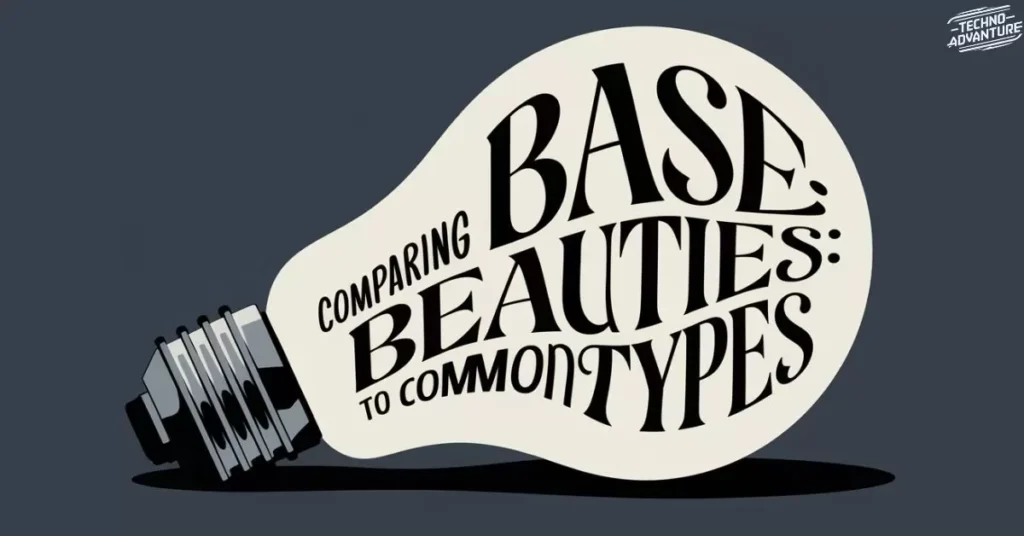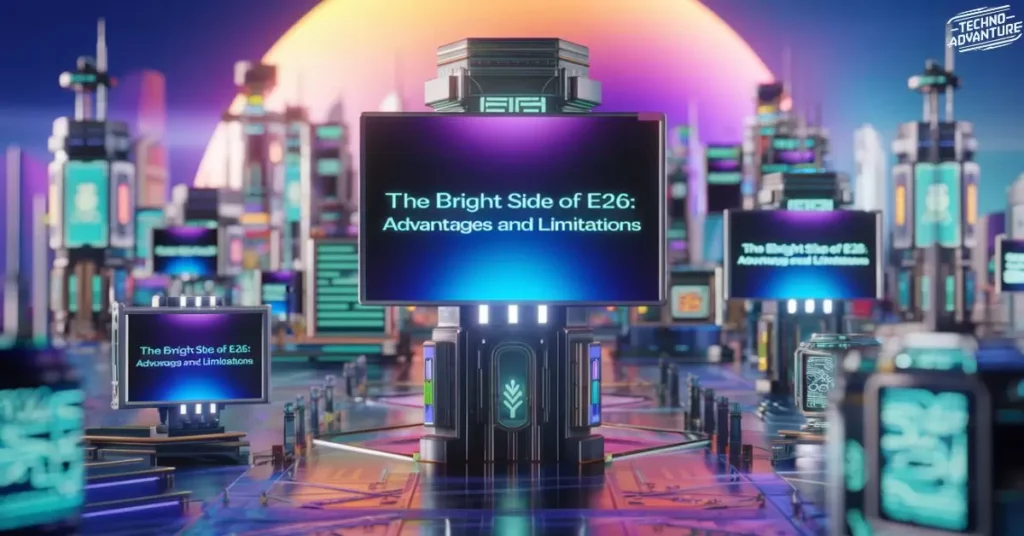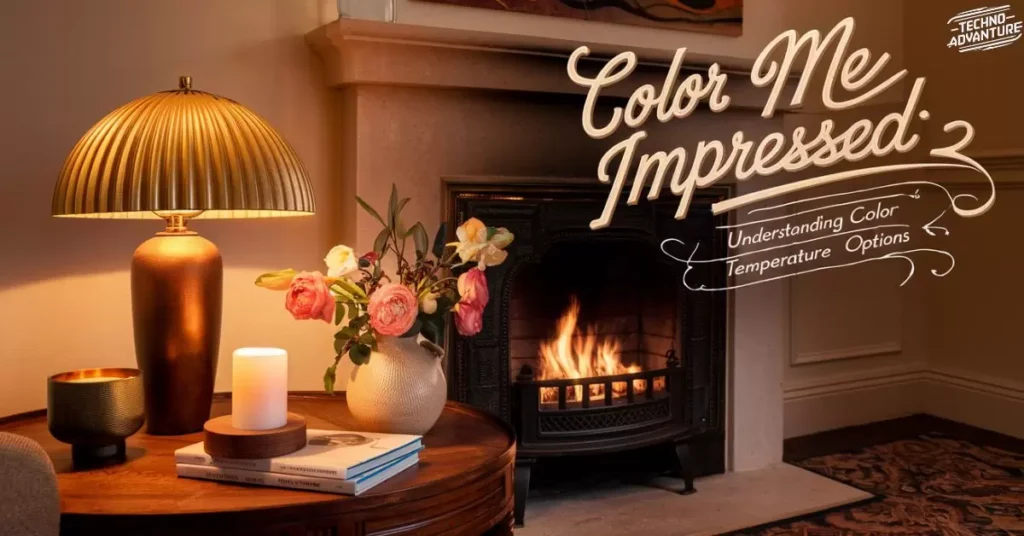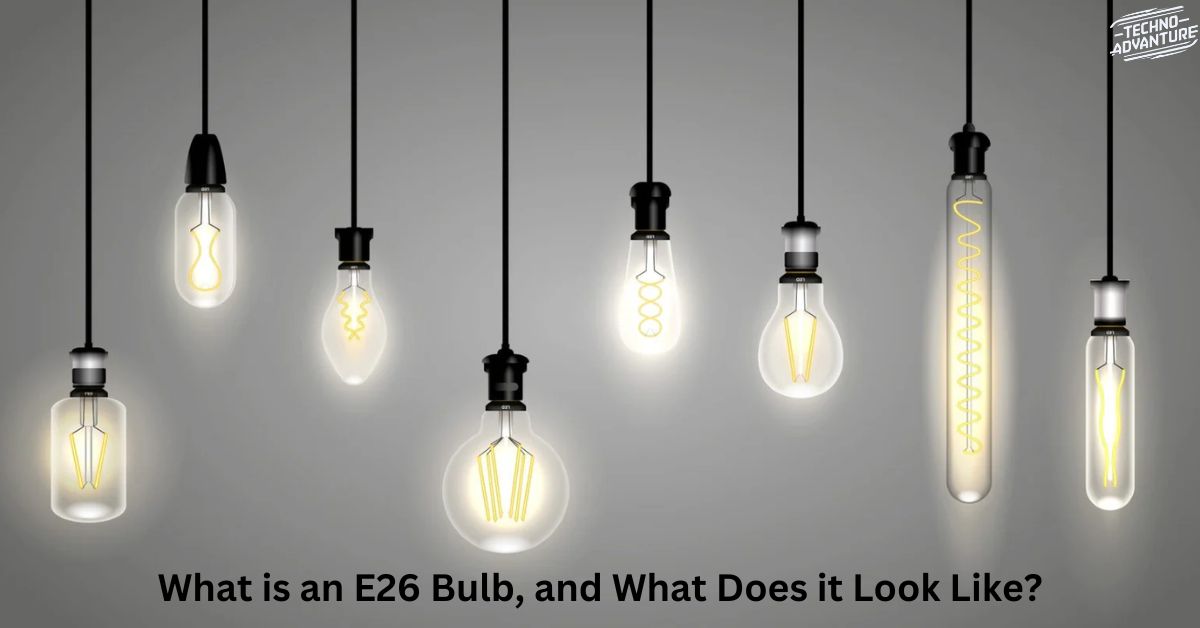Ever found yourself squinting at a light bulb, wondering what those mysterious numbers and letters mean? You’re not alone. Today, we’re diving deep into the world of E26 bulbs – the unsung heroes of home lighting. Buckle up as we shed some light on these everyday marvels!
Illuminating the E26 Bulb: More Than Meets the Eye
What exactly is an E26 bulb?
Picture this: you’re standing in the lighting aisle, surrounded by a sea of bulbs. Amidst the chaos, you spot a familiar shape – the classic light bulb. Chances are, you’re looking at an E26 bulb. But what sets it apart from the rest?
An E26 bulb is the standard light bulb you’ll find in most North American homes. It’s the go-to choice for lamps, ceiling fixtures, and pretty much anywhere you need to brighten up your space. But there’s more to this luminous marvel than meets the eye.
The “E” and “26” decoded: Unveiling the nomenclature
Let’s crack the code:
- E: This stands for “Edison”, tipping its hat to the legendary inventor Thomas Edison.
- 26: This number refers to the diameter of the base in millimeters.
So, when you hear “E26”, think “Edison base, 26 millimeters wide”. It’s that simple!
A Brief Jaunt Through Lighting History
Edison’s legacy: From candles to modern illumination
Before Edison came along, folks were literally burning the candle at both ends. The invention of the light bulb in 1879 changed everything. Edison’s design featured a screw base that allowed for easy installation and replacement – a feature we still use today.
“I have not failed. I’ve just found 10,000 ways that won’t work.” – Thomas Edison
This quote perfectly encapsulates the journey from candles to the modern E26 bulb. It wasn’t an overnight success, but a result of relentless innovation.
The birth of standardization: Why E26 became a household name
As electric lighting took off, a problem emerged: different manufacturers were producing bulbs with varying base sizes. Imagine buying a bulb only to find it doesn’t fit your lamp!
Enter the E26 standard. In the early 20th century, the lighting industry agreed on standardized base sizes. The E26 emerged as the go-to choice for general-purpose lighting in North America, bringing order to the chaotic world of bulbs.
Recommended Post: MrBeast and Amazon Face Legal Battle: Unraveling the Beast Games Lawsuit
E26 Bulbs: A Visual Guide
Anatomy of an E26: Breaking down the components
Let’s dissect an E26 bulb:
- Base: The metal part that screws into the socket. It’s 26mm in diameter (hence the name) and made of aluminum or brass.
- Contact: The small metal nub at the bottom of the base that completes the electrical circuit.
- Insulation: A thin layer of glass or ceramic separating the base from the bulb.
- Bulb: The glass enclosure that houses the light-producing elements.
- Filament/LED: Depending on the bulb type, this is where the magic happens – light is produced here.
Base beauties: Comparing E26 to other common types

While E26 reigns supreme in North America, it’s not the only player in the game. Let’s compare:
| Base Type | Diameter | Common Use | Region |
|---|---|---|---|
| E26 | 26mm | General purpose | North America |
| E27 | 27mm | General purpose | Europe, Asia |
| E12 | 12mm | Candelabra fixtures | Worldwide |
| GU10 | 10mm | Spotlight fixtures | Worldwide |
Shape shifters: The diverse forms of E26 bulbs
E26 bulbs come in a variety of shapes, each suited for different purposes:
- A-shape: The classic bulb shape, perfect for general lighting.
- Globe: Round bulbs, great for bathroom vanities.
- Floodlight: Wide beam for outdoor lighting.
- Candle: Mimics the shape of a candle flame, ideal for chandeliers.
- Tube: Long, cylindrical shape used in some floor lamps.
Spotting an E26 in the Wild
Telltale signs: How to identify E26 bulbs with confidence
Becoming an E26 detective is easier than you think. Here’s your checklist:
- Measure the base: If it’s 26mm in diameter, you’ve got an E26.
- Check the shape: Most E26 bulbs have the classic “light bulb” shape.
- Look for the “E26” marking: Many manufacturers print this on the base.
- Consider the context: In North America, if it’s a standard household bulb, it’s likely an E26.
Common lookalikes: Avoiding mix-ups with similar bases
Don’t be fooled by these E26 doppelgangers:
- E27: Nearly identical to E26, but 1mm wider. Common in Europe.
- E39: The “big brother” of E26, used in commercial settings.
- E12: Much smaller, used for candelabra fixtures.
Myth busters: Debunking E26 misconceptions
Let’s clear up some common E26 confusions:
- Myth: All screw-in bulbs are E26. Fact: While E26 is common, there are many other screw-in base sizes.
- Myth: E26 bulbs are always incandescent. Fact: E26 refers to the base size, not the technology. You can find LED, CFL, and halogen E26 bulbs.
- Myth: E26 and medium base are different things. Fact: “Medium base” is another name for E26 in North America.
E26 Bulbs in Action: Where You’ll Find Them
Home sweet home: Residential applications
E26 bulbs are the workhorses of home lighting. You’ll find them:
- Illuminating your living room from table lamps
- Brightening your kitchen in recessed ceiling fixtures
- Setting the mood in bedroom wall sconces
- Lighting up your porch in outdoor fixtures
Business bright: Commercial uses
E26 isn’t just for homes. Many businesses rely on these versatile bulbs:
- Restaurants use them to create ambiance
- Retail stores illuminate displays with E26 spotlights
- Office buildings often use E26 bulbs in task lighting
Recommended Post: The Las Vegas Aces: Dominating the Court and Captivating Fans
Specialty scenarios: Unique uses for E26 bulbs
E26 bulbs aren’t just for lighting! Some creative uses include:
- Reptile habitats: Special E26 heat lamps keep cold-blooded pets cozy
- Photography: Some DIY photographers use E26 bulbs for affordable lighting setups
- Plant growth: Special E26 grow lights help indoor plants thrive
The Bright Side of E26: Advantages and Limitations

Versatility: The Jack-of-all-trades in lighting
E26 bulbs shine in many ways:
- Widely available: You can find E26 bulbs almost anywhere.
- Variety of options: From warm to cool light, dim to bright, there’s an E26 for every need.
- Easy replacement: The standardized size means you can easily swap out bulbs.
- Technology agnostic: Whether you prefer LED, CFL, or incandescent, there’s an E26 version.
Compatibility conundrums: When E26 might not fit the bill
Despite their versatility, E26 bulbs aren’t perfect for every situation:
- Small fixtures: Candelabra or other small fixtures often require smaller bases like E12.
- High-power needs: Some industrial or commercial applications require larger bases like E39.
- International travel: E26 isn’t the standard everywhere, so your American lamp might not work in Europe.
Energy efficiency: How E26 stacks up in the green game
E26 bulbs come in various efficiency levels:
- Incandescent E26: The traditional choice, but least efficient.
- CFL E26: More efficient than incandescent, but contain mercury.
- LED E26: The most energy-efficient option, lasting up to 25,000 hours.
Pro tip: Switching from incandescent to LED E26 bulbs can cut your lighting energy use by up to 75%!
E26 Bulbs: A Buyer’s Guide
Decoding the label: What those numbers and symbols really mean
Ever felt like you need a decoder ring to understand light bulb packaging? Let’s break it down:
- Lumens: Measures brightness. More lumens = brighter light.
- Watts: Indicates energy use. Lower is better for your electric bill.
- Color temperature: Measured in Kelvins (K). Lower numbers (2700K-3000K) give warm, yellowish light. Higher numbers (5000K-6500K) provide cooler, blueish light.
- CRI (Color Rendering Index): How accurately the bulb renders colors. Higher is better, with 100 being perfect.
Watt’s up? Choosing the right brightness and efficiency
Forget about watts – lumens are the new watts when it comes to brightness. Here’s a quick conversion guide:
| Old Incandescent Watts | LED Equivalent Watts | Lumens |
|---|---|---|
| 40W | 4-6W | 450 |
| 60W | 7-10W | 800 |
| 75W | 11-15W | 1100 |
| 100W | 16-20W | 1600 |
Color me impressed: Understanding color temperature options

Color temperature can dramatically affect a room’s ambiance:
- Soft White (2700K-3000K): Warm and cozy, great for living rooms and bedrooms.
- Bright White (3500K-4100K): Energetic and vibrant, perfect for kitchens and bathrooms.
- Daylight (5000K-6500K): Crisp and invigorating, ideal for reading or detailed tasks.
Lifespan logistics: Balancing longevity and cost
When it comes to E26 bulbs, you often get what you pay for:
- Incandescent E26: Cheapest upfront, but last only about 1,000 hours.
- CFL E26: Mid-range price, lasting around 8,000-10,000 hours.
- LED E26: Most expensive initially, but can last 25,000 hours or more.
Case study: The Smith family replaced all their incandescent E26 bulbs with LEDs. Initial cost: $200. Annual energy savings: $150. Break-even point: 16 months. After that, it’s all savings!
Recommended Post: The Power of iPhone Promotion Technology: Revolutionizing Mobile Displays
The E26 Evolution: Smart Lighting and Beyond
E26 goes high-tech: Integration with smart home systems
Welcome to the future of lighting! Smart E26 bulbs offer:
- Voice control: “Alexa, dim the living room lights.”
- Color changing: Set the mood with millions of color options.
- Scheduling: Automate your lighting for security or convenience.
- Remote control: Adjust your lights from anywhere via smartphone apps.
LED revolution: How new tech is changing the E26 landscape
LEDs have transformed the E26 world:
- Increased efficiency: LED E26 bulbs use up to 75% less energy than incandescent.
- Longer lifespan: Many LED E26 bulbs last over 20 years.
- Better light quality: High CRI LED bulbs render colors more accurately.
- Instant on: No more waiting for CFLs to warm up.
The future is bright: Emerging trends in E26 bulb design
Keep an eye out for these exciting developments:
- Li-Fi: Using light waves to transmit data, potentially turning every E26 bulb into a Wi-Fi hotspot.
- Tunable white light: Adjust color temperature to match your circadian rhythm.
- Built-in speakers: Some E26 bulbs now include Bluetooth speakers.
- Air purifying bulbs: Emerging technology that cleans air while providing light.
E26 and the Environment: A Balancing Act

Materials matter: The composition of E26 bulbs
E26 bulbs vary in their environmental impact:
- Incandescent: Glass, metal filament, inert gas. Least eco-friendly due to energy use.
- CFL: Glass, mercury (small amount), electronic components. Energy-efficient but requires special disposal.
- LED: Semiconductors, plastic, metal heat sinks. Most eco-friendly in long-term use.
Disposal dilemmas: Proper recycling and environmental impact
Responsible disposal is crucial:
- Incandescent: Can usually go in regular trash, but check local regulations.
- CFL: Contains mercury – must be recycled properly. Many hardware stores offer CFL recycling.
- LED: While they last longer, they do eventually need disposal. Look for electronics recycling programs.
Energy-saving potential: E26’s role in reducing carbon footprints
Switching to efficient E26 bulbs can make a big difference:
- A single LED E26 bulb can save up to 1,000 pounds of CO2 over its lifetime compared to incandescent.
- If every U.S. household replaced just one incandescent with an LED, we’d save enough energy to light 2.5 million homes for a year!
Mastering E26: Tips and Tricks for Optimal Use
Installation insights: Getting the perfect fit
Follow these steps for a smooth E26 installation:
- Ensure power is off at the switch and breaker.
- Remove old bulb by gently unscrewing counterclockwise.
- Check socket for any damage or debris.
- Screw in new E26 bulb clockwise until snug – don’t overtighten!
- Restore power and test.
Dimmer dynamics: Ensuring compatibility and smooth operation
Not all E26 bulbs are dimmable. Keep these points in mind:
- Check the bulb packaging for “dimmable” label.
- Ensure your dimmer switch is compatible with the bulb type (especially for LEDs).
- If you notice flickering, buzzing, or limited dimming range, you may need a different bulb or dimmer.
Maintenance musts: Keeping your E26 bulbs in top shape
Maximize your E26 bulb’s lifespan with these tips:
- Keep them cool: Ensure proper ventilation around fixtures.
- Clean regularly: Dust can reduce light output and efficiency.
- Avoid frequent switching: Turning electric lights on and off too often can shorten lifespan.
- Use appropriate fixtures: Don’t use indoor bulbs in outdoor settings.
E26 Around the World: Global Perspectives
International equivalents: E26’s cousins in other countries
While E26 rules North America, other regions have their own standards:
- Europe: E27 is the standard (slightly larger at 27mm).
- UK: B22 (bayonet cap) is common alongside E27.
- Japan: Both E26 and E17 (smaller version) are used.
- Australia: E27 is standard, but B22 is also common.
Voltage variations: Traveling with E26 bulbs
Thinking of taking your favorite lamp abroad? Consider this:
- North America uses 120V, while much of the world uses 220-240V.
- Most modern E26 LED bulbs can handle 120-240V, but always check the label.
- For incandescent or CFL E26 bulbs, you’ll likely need a voltage converter.
Conclusion: Embracing the Brilliance of E26
Recap: Why E26 continues to shine in the lighting world
The E26 bulb has stood the test of time for good reason:
- Versatility: From cozy living rooms to bustling offices, E26 fits the bill.
- Standardization: Its widespread adoption means easy replacements and upgrades.
- Evolution: From incandescent to smart LEDs, E26 has adapted with the times.
- Efficiency: Modern E26 bulbs offer significant energy savings.
Looking ahead: The enduring legacy of a lighting standard
As we look to the future, the E26 bulb’s legacy is far from dim. Its adaptability ensures it will continue to play a crucial role in lighting our world, evolving with new technologies while maintaining its user-friendly design.
Whether you’re a lighting novice or a DIY enthusiast, understanding E26 bulbs empowers you to make informed choices about your home or office lighting. So next time you’re in the lighting aisle, you’ll know exactly what to look for – and you might just see these everyday objects in a whole new light!

Hello, I’m Sarah, a seasoned writer with over six years of experience crafting engaging blogs and articles. My expertise spans diverse niches, including technology, gaming, cryptocurrency, finance, business, and fashion. With a passion for storytelling and a knack for delivering insightful content, I strive to inform and inspire my readers across these dynamic fields.











